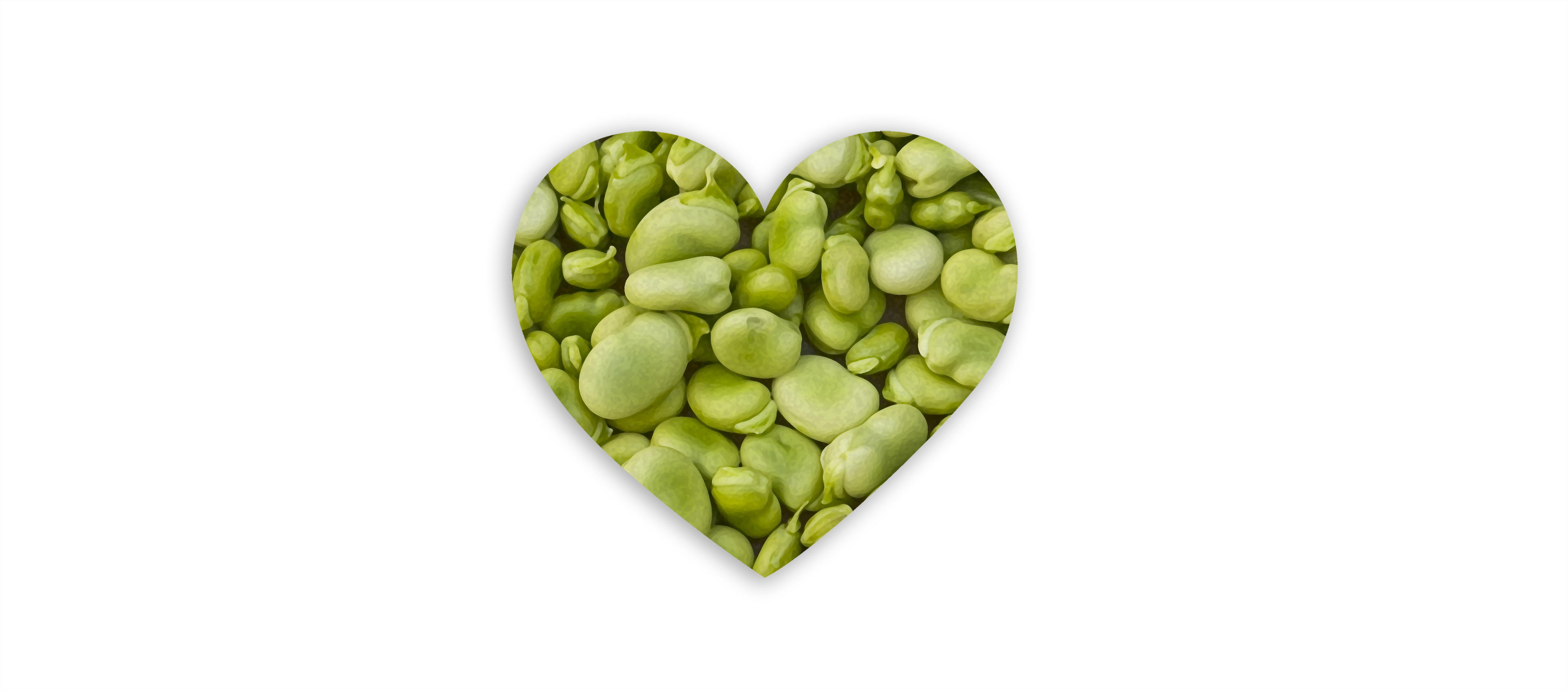The love language of lima beans
A blossoming relationship, saved by the humble legume


We burned a lot of garlic bread the summer we were 22. Jason and I had been together two years already when we moved into what had once been a chicken coop on Little Brushy Mountain in southwestern Virginia, soon after our respective graduations from Roanoke College and Hollins University. We spent all of our time together, filling the days with the joys of youth — parties on the deck in the moonlight, unlimited amounts of exactly the food we wanted, our own rules — and the arguments of early relationships adjusting to different living patterns. He was neater than I was, which he knew beforehand but didn't realize until the layer of clothes on the floor took over the bedroom and began to eye the couch. We were optimistic but aware of our youth; we had no experience, but like it was on a syllabus of growing up, we understood that cohabitation was a trial we could fail.
Still, though, we were young and in love, and learning to cook. We burned our tentative attempts at our moms' spaghetti and chili often enough, but sometimes our meals simmered into something great. Adulthood was scary in a lot of ways, but figuring out which specific flavors I liked was a game-changer. Garlic was really the first thing that I knew I liked, and I added as much of it to everything as I wanted.
Up until this point, I'd never spent more than $30 in one go at a grocery store before. What did I need besides some candy and chips and pop, a pack of ramen or mac and cheese to be made in a sticky residence hall microwave? Everything was handed to us, and now we had to hold it in our hands and make it edible. So we tried things. We raided the frozen section of Kroger, filling our cart in the hopes that we would find something we liked. Peas and carrots, pearl onions, lima beans, whatever, it's just a dollar!
The Week
Escape your echo chamber. Get the facts behind the news, plus analysis from multiple perspectives.

Sign up for The Week's Free Newsletters
From our morning news briefing to a weekly Good News Newsletter, get the best of The Week delivered directly to your inbox.
From our morning news briefing to a weekly Good News Newsletter, get the best of The Week delivered directly to your inbox.
Jason first cracked the code for lima beans. It wasn't anything too complicated, just beans thawed on the stovetop, then sort of sauteed in some margarine with some added flavors. We only had about six spices and he used three of them: garlic powder, lemon and pepper, and dried basil. With something simple and hard to screw up — a frozen salmon filet, perhaps, or chicken drumsticks — it made a whole and healthy meal.
We made lima beans constantly. Their texture can be smooth or a little starchy, easy to imbue with other, stronger flavors. Almost as hearty as a potato and as healthy as most any green food, they are a complement to any simple meal that you hope won't overwhelm you with prep work and concentration. Except for our favorite Chinese place, the restaurant scene in Salem was none too enticing, and we lived up a mountain ill-suited to delivery anyway. Cooking at home was our sole option. As we stumbled through meals, we found that lima beans were the one thing we could get right consistently. Lima beans are an inherently uncool bean, but like brussels sprouts, that makes them a ripe target for renovation. Our friends even asked for the recipe. Making a supremely dorky source of fiber appealing to our peers was one of the first triumphs of our pre-marriage.
It was 10 years ago when Jason first made his lima beans. We live in Kansas now, far from any mountain and much closer to good restaurants from which to get takeout. And as we had a little more money and a little more experience at the stove, we moved away from our old standby; lima beans have never claimed to be exciting. Soon enough, our newly expanded appetite became its own financial problem; pizza and fresh salmon and out-of-season produce all cost more than a buck-fifty bag of vegetables. While budgeting, we looked for solutions to cut down on food costs. "What about lima beans?" he asked, and it was like hearing the voice of a friend you haven't seen in years.
These days, our lima beans are much better. We use real butter now, no more tubs of "healthy" margarine we grew up with. We use fresh basil, from local grocery store Checkers or from our garden. And fresh garlic, which we know how to crush, and fresh lemons, which we don't know how to zest yet but do have the ability to cut in half and juice, and fresh cracked pepper, which we use on everything.
A free daily email with the biggest news stories of the day – and the best features from TheWeek.com
But our method hasn't changed much: Put the frozen beans in boiling water, bring back to boil, turn down, cover and simmer for 20 minutes, season, and serve. It's what we turn to when we're stressed, out of money and time, wishing not to go to the grocery store. And it's what we cook when we want to remember being 23, figuring it out together, in hopes that we will still be figuring it out together in another 10 years or so. Lima beans are our love language: tasty, healthy, reliable. Nothing exceptional but entirely ours.
Rachel McCarthy James lives in Kansas. Her first book, The Man From The Train: The Solving of a Century-Old Serial Killer Mystery was recently nominated for an Edgar Award.


